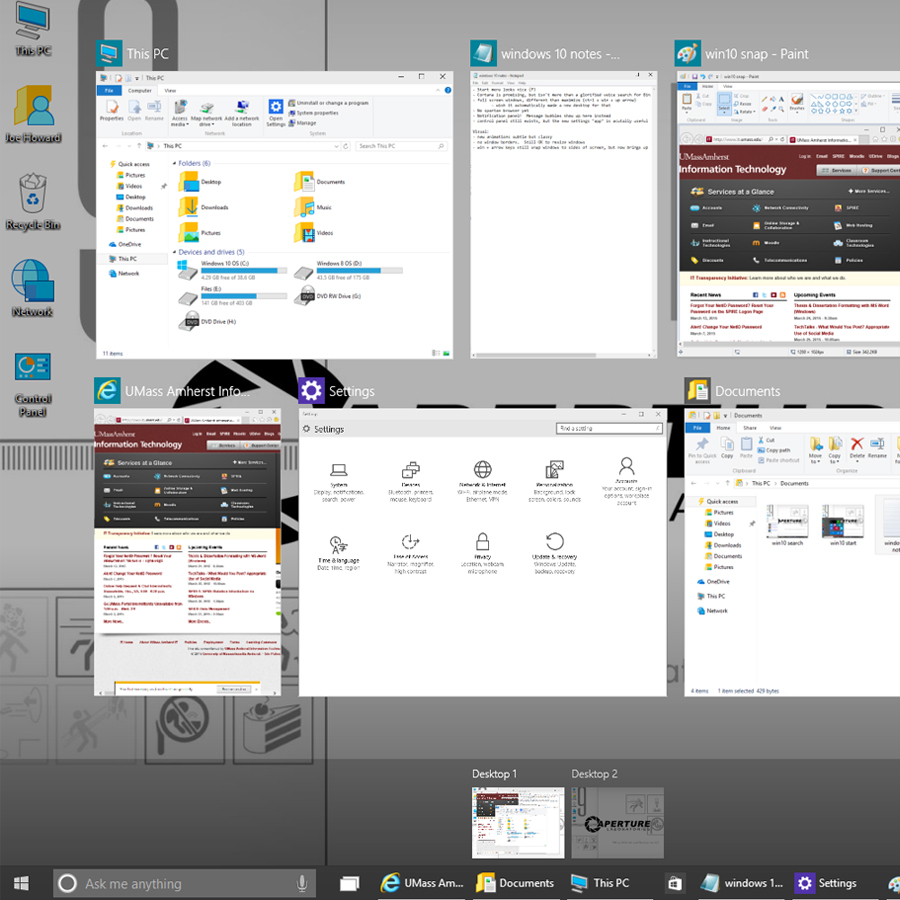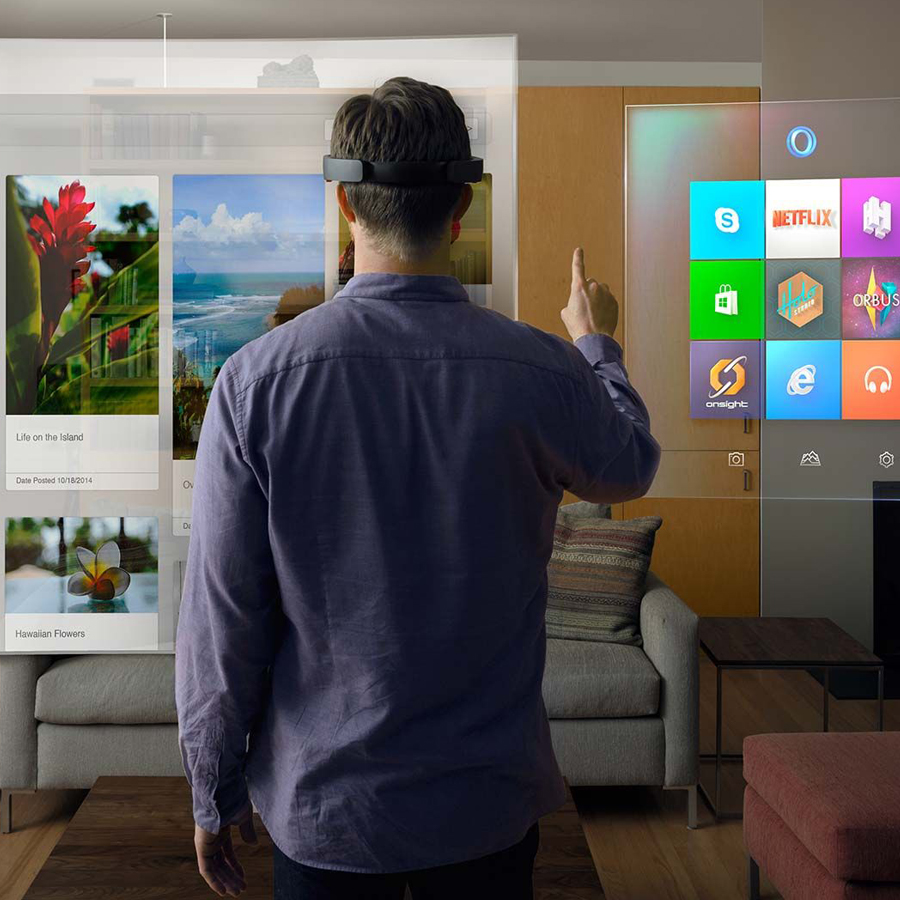Windows 10: Start Button is on Song

Windows 10 brings back the Start Button, adds multiple desktops & an adaptable interface.
Microsoft’s latest operating system, Windows 10 is being rolled out throughout the world. No doubt, Windows 10 is altogether a new experience to the world. Unlike previous versions of Windows operating systems, Windows 10 operating system is being offered for free. Users qualify for the free upgrade if they have a valid Windows 7 or Windows 8 licence. The new Windows 10 licence is tied to the machine on which upgrade is performed. The opportunity to secure the free upgrade is open for 12 months, after which Windows 10 would cost between £80 to £120, depending on which version you want to use.
What is Windows 10?
Windows 10 is the most comprehensive and exhaustive overhaul of Microsoft’s Windows franchise in the history of the company. Windows 10 is completely re-designed by observing the issues in earlier versions.

“Right now we’re releasing Windows 10, and because Windows 10 is the last version of Windows, we’re all still working on Windows 10″ That was the message from Microsoft employee Jerry Nixon, a developer evangelist speaking at the company’s ignite conference. Nixon was explaining how Microsoft was launching Windows 8.1 last year, but in the background it was developing Windows 10. Now, Microsoft employees can talk freely about future updates to Windows 10 because there’s no secret update in the works coming next. It’s all just Windows 10. It sounds like Microsoft may kill Windows by not doing future versions, the reality might be different in coming days. Earlier it was a product selling, but now they are starting “Windows as a service”. As per Microsoft, Windows 10 can be used across 2000+ devices.
What’s new in Windows 10?
Microsoft has announced that Windows 10 will go on general release with more details on an operating system. Windows 10 has been powered with some new productivity tools and apps. Below are some of the new updates in Windows 10 OS:
1. Start Button strikes back: Microsoft was focused on introducing the world to its “Live Tiles” interface. It was assumed that users wouldn’t mind a desktop screen with less functionality. It was known for a while that Start button would make a triumphant return.The Start Menu will allow to access apps, search for content as well as pin apps, contacts and websites into it.

2. Windows 10 price: Windows 10 will be free for existing Windows 7 and 8/8.1 users for the first year as Microsoft looks to kickstart adoption. Pricing after this is still unconfirmed, with PC Gamer claiming that Microsoft will revert to the traditional one-off license fee model. Microsoft has confirmed that Windows 10 users will receive free updates for the lifetime of their device.
3. Cortana coming to PCs: Microsoft’s personal assistant will be pre-loaded into Windows 10. It claims that Cortana will be able to provide regional specific answers to the questions. Users will also be able to access Cortana’s Notebook at anytime to see what it knows about you and add or remove information. For eg: Cortana was asked to “show photos from December,” which it happily (and quickly) does, and also transcribe and sent an email entirely through voice commands.
4. Microsoft Edge: Microsoft launched a new web browser for Windows 10, which will be called Microsoft Edge after dropping the “Project Spartan” codename. Project Spartan is a new browser for Windows 10, entirely separate from Internet Explorer. Almost Chrome-like design and a brand-new rendering engine, but the focus here is on social sharing. You can highlight and annotate websites before sharing them with friends, kind of like having Skitch built right into your browser. There’s also Cortana integration and a reading view that is similar to Pocket which allow you read pages offline.There are three key features have been demonstrated:
- Users will be able to annotate any web page using finger/stylus or keyboard input.
- Spartan will have a reading mode.
- The Cortana voice assistant will be integrated into the browser.
5. Will there be end of password? Microsoft has confirmed Windows 10 will support the “Fast Identity Online (FIDO)” standard. This means users will be able to sign into commonly used apps like Outlook using a variety of biometric tools from fingerprint readers to retina scanners. “The current Technical Preview build enables a number of enterprise scenarios and it showcases our integration with Windows 10 sign-in, Azure Active Directory, and access to major SaaS services like Office 365 Exchange Online, Salesforce, Citrix, Box, Concur, just to name a few,” noted Dustin Ingalls, group program manager at Microsoft. With Windows 10, for the very first time Windows devices and Microsoft-owned and partner SaaS services supported by Azure Active Directory authentication can be accessed end-to-end using an enterprise-grade two-factor authentication solution – all without a password.
6. Windows Phone 10: A specialized version of Windows 10 will be launched for smartphones, with revamped Office and Outlook applications, which resemble their PC counterparts. Windows Phone 10 will have an integrated messaging hub for Skype, texts and other IM services.
7. Windows 10 Continuum: Microsoft was very keen to push the “touch-first” mantra from Window 8, there were some sufferings on user experience point of view due that. They tried to address those at some extent in 8.1 update, and claiming that Windows 10 has overcome through such issues. Continuum will allow the Windows 10 interface to adapt based on the hardware system it is running with.If working with a 2-in-1 hybrid like the Surface, Windows 10 will met with the standard desktop while the ‘Type Cover’ keyboard is connected. However, when you detach the keyboard, OS will detect this and promptly switch to tablet mode.
8. Multiple desktops debut: Similar to Apple’s OS X, Microsoft has finally introduced multiple desktops. This is something which will give power to user to make it easier to work on different projects simultaneously. This would be handy for employees to keep their personal and work environments separate.
9. A unified app store: Developers will now be able to create one app which runs across all Windows devices from phones through to 85-inch touch displays. Microsoft said it’s also going to allow volume app purchases based on existing organizational identity and allow businesses to reclaim or re-use licenses. Larger enterprises will be able to create their own customized app store for employees, with the ability to include selected public apps alongside in-house apps.
10. Universal apps: Controlling the ‘Live Tile’ app like regular program was one of the main problem. This all changes with Universal apps. They will be framed in the same windows as programs to resize, move, maximize, minimize and close with an ease.
11. Flexible security updates: Security and critical updates will continue to be pushed out on a regular basis. Consumers will get updates as soon as they are ready via Windows Update and now businesses will be able to ‘opt-in’ to a fast-paced cycle as well. Microsoft will allow businesses to lock-down mission critical apps and segment user groups to deliver updates in a more flexible way too.
12. Improved multitasking: Windows 10 will introduce a quadrant layout allowing up to four apps to be snapped on the same screen. An OS will even make smart suggestions to fill available screen space. You’ll be able to cycle through open apps using the familiar Alt + Tab shortcut, but there is also a Task View button on the taskbar. Tapping this will show all open apps, allow you to re-arrange them and switch between virtual desktops.
13. MDM built in: Administrator will be able to manage devices through traditional methods like Active Directory and System Center. Windows 10 will include extended built-in mobile device management (MDM) capabilities – making it easier to manage a device from the cloud.
14. Snap Assist: Window-snapping was first introduced in Windows 7. This feature lets you “snap” a window to one side of your screen without having to move it around and resize it manually. Now in Windows 10, more snap options are added. You can snap windows into new screens and tile Windows.Snap Assist can make it easier to juggle multiple apps, programs and windows open on your screen. You can then drag and drop windows, apps and programs to other corners until you’ve filled each corner. Snap Assist can also be used with keyboard shortcuts, such as the Windows Key + Left Arrow/Right Arrow/Up Arrow/Down Arrow. Use the Windows Key + Left Arrow to snap a program, app or window into one side of the screen, then use the Windows Key + Up/Down Arrow to snap it to a corner.
15. The Command Prompt enters the 21st Century: Another quite amazing feature is the command prompt which facilitate to use keyboard shortcuts! Now, you will be able to paste in your commands! Hardly groundbreaking, but actually pretty exciting.
16. Gaming: Microsoft let anyone to stream Xbox One game to Windows 10 PC or tablet for that one has to be on the same network. Elsewhere, there’s a new Xbox app for PC and tablet that lets us access our activity feed, messages and friends list. It’ll even display information on games in third-party clients like Steam.
17. Holograms: Windows Holographic is the great surprise to end users and great opportunity for programmers! Microsoft’s introduction of Windows Holographic, a hologram based virtual reality offering intended to bring user “beyond screens, beyond pixels, and beyond today’s digital borders,” Redmond said. It’s an AR platform, letting us visualize the “3D projections” using a pair of AR goggles. Microsoft showed off HoloLens-a wearable, wire-free computer that will enable Windows Holographic-which the company says will be available at some point “in the Windows 10 timeframe.”

At 9series, we as a team has explored the new features and tools of Windows 10 OS and excited to do some amazing projects on it. Feel free to drop a message to have a discussion on Windows 10.
Recent Posts
Deep Learning Explained: Understanding the Brain Behind AI
The Intersection of AI and IoT: Creating Smarter, Connected Environments
The Evolution of AI: From Simple Algorithms to Neural Networks
The Role of AI in Sustainable Development
Scaling New Heights: Integrating Advanced Technologies in Startup Product Engineering